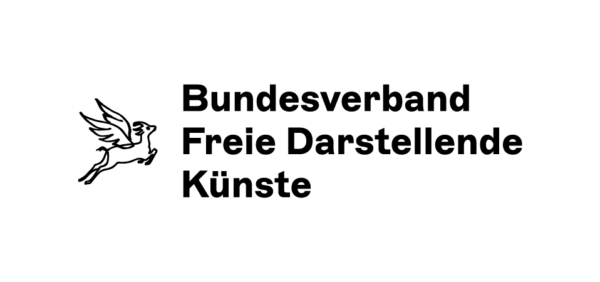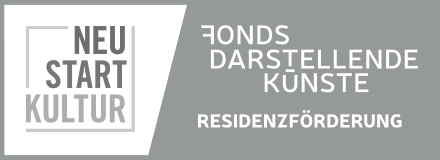
DAY 1: Monday 21st
BEFORE ENTERING IN CONTACT WITH THE PROSTHESES:
We started with a writing exercise that was prior to the contact with the prostheses. Where we wrote about how we felt physically, what we imagined or wanted to do with the prostheses and what points of the body we wanted to intervene or explore with them.
From what was written and discussed, the following things came out:
solemnity
camp
How could humor enter into this month of work?
We were talking about where the name of Post-Organic Bauplan comes from. On the one hand, the term Post-Organic comes from a philosophy that understands humans as not reducible to biological components. A philosophy that understands that the term humans refers to a greater complexity that involves political and social spheres. A term that expresses in her book ‘’El Hombre Postorgánico’’, the author and philosopher Paula Sibila. In this book the author explains that the concept of man is no longer explained by nature. This philosophical tradition is linked to the development made by Foucault when he writes about biopolitics.
On the other hand, the concept of ‘’Bauplan’’ comes from developmental biology. It is a term used to denote the body plan of the species and in the different organisms. This term is linked to an immanentist philosophy, which understood that the body plan of the species unfolds imminent from the inside to the outside. This means that the form/plan of a species or an organism pre-exists in its internal plan. With the advent of developmental biology and genetic insights into DNA, this concept prevailed. DNA and the genetic machinery of an organism still maintained the idea of a written plan that completed the final body plan of organisms.
In this way, the name of the project Post-Organic Bauplan forces a dialogue between two concepts that come from completely different Epistemologies: one comes from an idealistic philosophy that believed in immanent structures of the body or the body plan, based on an
a priori determination, and the other comes from a philosophy that disbelieves in nature to explain the complexity of the human body, and unveils nature as an artificial concept socially created and used as a control device. These two words together generate friction and glitch between them.
In this way the concept Post-Organic Bauplan refers to the possibility of changing the body plan, not fixed or described by nature. The possibility to actively participate in our body plan, and in the body we decide to participate in our society with. It allows us to think about a body where the boundaries are blurred, and allows a dialogue between organic and inorganic elements to create corporeality that does not respond to the mere desires of a political program.
STARTING POINT:
Record an archive of the link between prosthesis and body. Focus on the relationship prosthesis-body.
Work on the relationship of body-prostheses from the body in movement. From a physical experience.
Themes touched upon from the starting point:
invite people who have never had contact with prostheses to propose a daily exercise and record how they feel this experience.
MAR: to situate the project Post-Organic and to propose possibilities or other directions where it could be developed. Detect what is there and what has been done and think of variables.
JO: Possible research variables. Loss of frontality disorientation device.
DAY 2: Tuesday 22nd
Description of the practice: Warm up, physical training. Drifting practice with prosthesis 40min. Then sharing and discussion.
JO: first contact with the prosthesis. Emotional, relational, primary. Tenderness.
MAR: process of written description of the material, esthetic and functional characteristics of the prostheses. Putting the prostheses away to observe them.
Challenging the epistemological notions in which we situate the relationship with the prosthesis. For example, criticizing the word use, etc.
Salva and Jose shared a bit of the background of the project and why they problematize the words ‘’use’’ and ‘’control’’ when referring to the prosthesis.
For Post-Organic Bauplan it is important to change those words to refer to a relationship with the prosthesis that goes far away from a technical relationship. Changing the language will make more visible the intention of the project which is to create a symbiotic relationship with the robotic prosthesis where the limits of one body and the other are getting blurry.
DAY 3: Wednesday 23rd
Description of the practice: Warm up, physical training. Drifting practice with prosthesis 40min. Then sharing and discussion.
MAR: Cosmetics, from what aesthetic biology are they constructed? The pointed, the sharp. Consider them as cosmetic objects.
Sensibility if internal or external? What is the flow of information, incitement or initiative?
Traffic of affections. Injection of care.
Care goes in at least two directions. Towards the prostheses, taking care of them so that they do not break. And towards oneself, since prostheses can hurt us. So we must take care of their sharp points for example.
Internal and external state changes. What internal state of the prosthesis modifies my external state? Implications of internal or external change as a result of the link.
Uselessness. Because they are useless, they are aesthetic but which are not apparently useless
appearance and function
JO: prosthesis as a disorientation device that allows us to lose frontality and verticality. Possibility of soft dialogue. How do we perceive objects? contrast between a hegemonic way of perceiving objects that is frontal and vertical straight, heteronormative and another that is twisted queer.
MAR: vestigial organ, advantage, disadvantage. Just because it doesn’t empower you, it doesn’t benefit you.
It depends on the area where you place the prosthesis changes a lot the reading. Problematize the areas of the body that are more related to masculine or feminine strengths.
To think about how biological categories are applied to them, which are later derived in speculative drawing exercises where we imagine where they come from and where they are going.
Think of them as vestiges of the past or the future.
Adapted vs. maladapted to the ecosystem… What is the ecosystem where the prosthesis could be more adapted or maladapted? e.g. theater with a clean, sterile space.
DAY 4: Thursday 24th
Description of the practice: Warm up, physical training. Drifting practice with prosthesis 40min. Then sharing and discussion.
Design: from what aesthetic ideology are they designed? What senses and meanings do they invoke?
In what sense do they play morphologically with the archetypal energies of the masculine and the feminine?
Speculative drawings







DAY 5: Friday 25th
Description of the practice: Research on symbiotic and parasitic relationships, etc. Sharing, discussion. Writing of the logbook.
We arrive to the conclusion that there are vestigial organs of the prosthesis:
– Completely vestigial: the switch.
– Semi vestigial: because it is still functional but mediates the communication
between prosthesis and body in a way that perhaps is no longer of interest to us: the gyroscopic sensor.
Exercices thinking of:




flausen+headquarters
Alexanderstraße 124
26121 Oldenburg
flausen+gGmbH
Klävemannstraße 16
26122 Oldenburg
Das überregionale Netzwerk flausen+ wird gefördert von der Beauftragten der Bundesregierung für Kultur und Medien über das Programm “Verbindungen fördern” des Bundesverbands Freie Darstellende Künste e.V.
Gefördert vom Fonds Darstellende Künste aus Mitteln der Beauftragten der Bundesregierung für Kultur und Medien im Rahmen von NEUSTART KULTUR.
Gefördert vom Fonds Darstellende Künste aus Mitteln der Beauftragten der Bundesregierung für Kultur und Medien.



